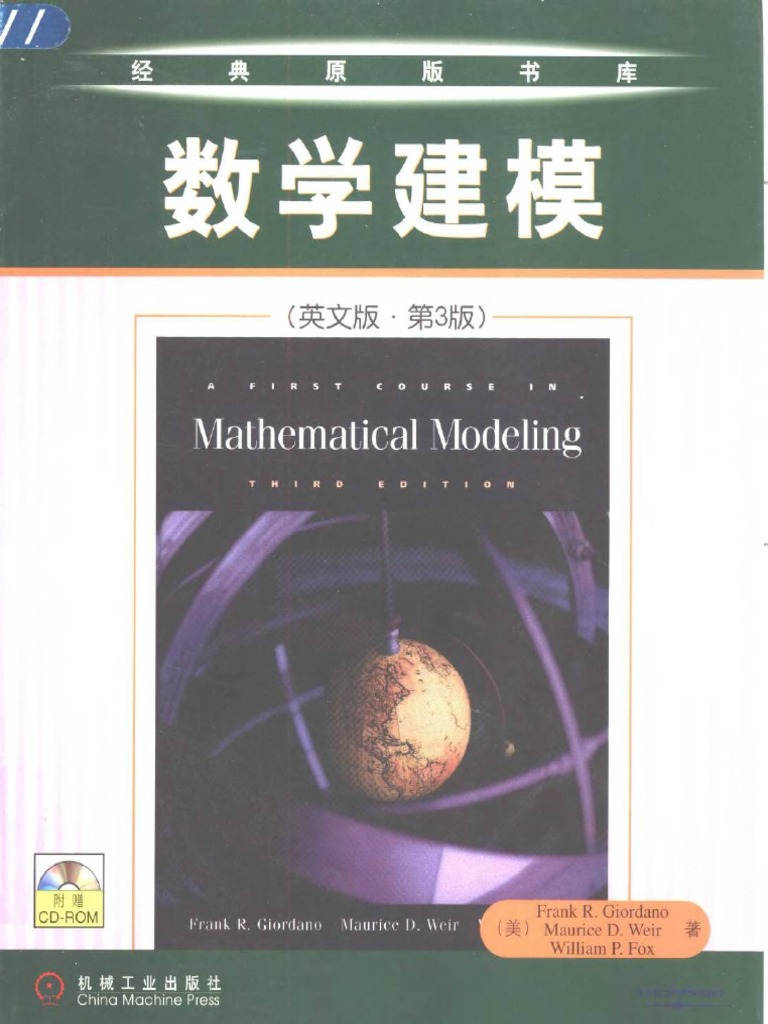Mathematical modeling can be likened to a sculptor chiseling away at a solid block of marble, revealing the intricate form within. Just as the sculptor must understand the properties of the stone, a mathematician must grasp the nuances of the physical world through abstraction. This journey, although potentially challenging, can lead to a transformative understanding of complex systems. In this article, we shall explore how to embark upon the fascinating endeavor of mathematical modeling, delineating essential steps and pivotal concepts.
1. Cultivating a Robust Mathematical Foundation
Before delving into the intricate world of mathematical modeling, one must establish a solid mathematical foundation. This encompasses a myriad of topics including calculus, linear algebra, and differential equations. Each of these subjects serves as a crucial pillar, upon which more advanced concepts are built. A profound understanding of these areas equips the modeler with the analytical tools necessary to navigate intricate systems.
Calculus, for instance, is vital for understanding change and the behavior of functions. A familiarity with derivatives and integrals allows for the analysis of dynamic systems. Linear algebra, on the other hand, elucidates the behavior of vector spaces and matrix operations, which are indispensable when dealing with multi-variable models. Differential equations govern the behavior of myriad phenomena, from population dynamics to chemical reactions, making them indispensable for any aspiring modeler.
2. Identifying Real-World Problems
Every remarkable mathematical model begins with a pertinent problem. Be it a challenge in physics, economics, biology, or engineering, the first step is to identify a scenario that requires elucidation. This stage resembles the initial brainstorming of a novelist seeking to craft a compelling narrative. By narrowing down a specific problem, the modeler can focus on the critical aspects that must be explored.
Whether it is modeling the spread of a disease, predicting economic trends, or simulating fluid dynamics, the key is to ensure that the problem holds significance. Selecting a real-world issue not only enhances the appeal of the model but also provides the necessary context to apply mathematical concepts. This application demonstrates the beauty of mathematics as a tool for understanding and influencing the world.
3. Formulating Assumptions
Every successful mathematical model is built upon a bedrock of assumptions. These assumptions, often arising from insights into the problem at hand, simplify the complexities of reality, allowing for a tractable analysis. Just as a painter must make choices about composition and color to create a cohesive work, a modeler must judiciously select assumptions that will facilitate the unraveling of a problem.
For example, in modeling population dynamics, one might assume a closed system with no immigration or emigration. While such assumptions may seem overly simplistic, they allow the modeler to concentrate on essential dynamics without extraneous variables clouding the analysis. This pruning of complexity can lead to elegant solutions that illuminate underlying principles of the system.
4. Constructing the Mathematical Model
The heart of mathematical modeling lies in the construction of the model itself. This is the stage where intuition meets formalism. A model can take various forms, from algebraic equations to simulations. The choice of representation often depends on the nature of the problem and the preferences of the modeler.
For instance, a differential equation might describe a continuous change, while a statistical model might best capture the inherent variability in data. Each approach offers unique insights; hence, understanding the advantages and limitations of different modeling techniques is vital. Integration of computer-based simulations can also enhance the depth of analysis, providing visualizations that reveal the intricate dynamics of complex systems.
5. Analyzing and Validating the Model
A model is only as good as its ability to mirror reality. Thus, rigorous analysis and validation are imperative. This process is akin to a scientist conducting experiments to test a hypothesis. It involves comparing the model’s predictions with empirical data, determining the accuracy of the model, and assessing its limitations.
Through this scrutiny, the modeler can refine their assumptions, tweak parameters, or even re-evaluate the underlying framework of the model. The goal is to achieve a balance between complexity and fidelity, ensuring that the model remains useful without becoming unwieldy. Validation is the crucible through which the robustness of the model is determined.
6. Communicating Results Effectively
Once a model has been developed and validated, the next challenge is communication. Effective dissemination of results is crucial, as it allows others to understand, utilize, and build upon your work. This step carries the weight of artistic expression; the insights garnered must be shared in a manner that conveys meaning without overwhelming the audience with complexity.
Utilizing clear visuals, well-structured presentations, and accessible language can demystify the results. The modeler acts not just as a mathematician, but as a storyteller, weaving together data, insights, and conclusions into a coherent narrative. Engaging with the audience fosters a greater appreciation for the beauty of mathematical modeling.
7. Embracing Iteration and Continuous Learning
Mathematical modeling is not a linear path but rather a cyclical journey of discovery. The insights gained often lead to new questions, urging the modeler to revisit previous assumptions and models. Embracing this iterative process paves the way for innovative breakthroughs and deepens the understanding of the modeled system.
Moreover, continuous learning is essential in a field that evolves rapidly. Staying abreast of new techniques, software, and theoretical advancements enriches the modeling repertoire and opens up avenues for future exploration. Engaging with the mathematical community, attending workshops, and collaborating with experts fosters an environment of growth and curiosity.
In conclusion, embarking on a journey into mathematical modeling is akin to navigating uncharted waters, filled with challenges and the promise of profound understanding. By cultivating a solid foundation, identifying real-world problems, formulating assumptions, constructing models, analyzing results, communicating effectively, and embracing continuous growth, budding modelers can unlock the myriad complexities of our world. The universe of mathematical modeling awaits your exploration, offering insights that can shape our understanding of reality in extraordinary ways.












